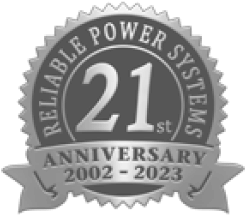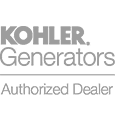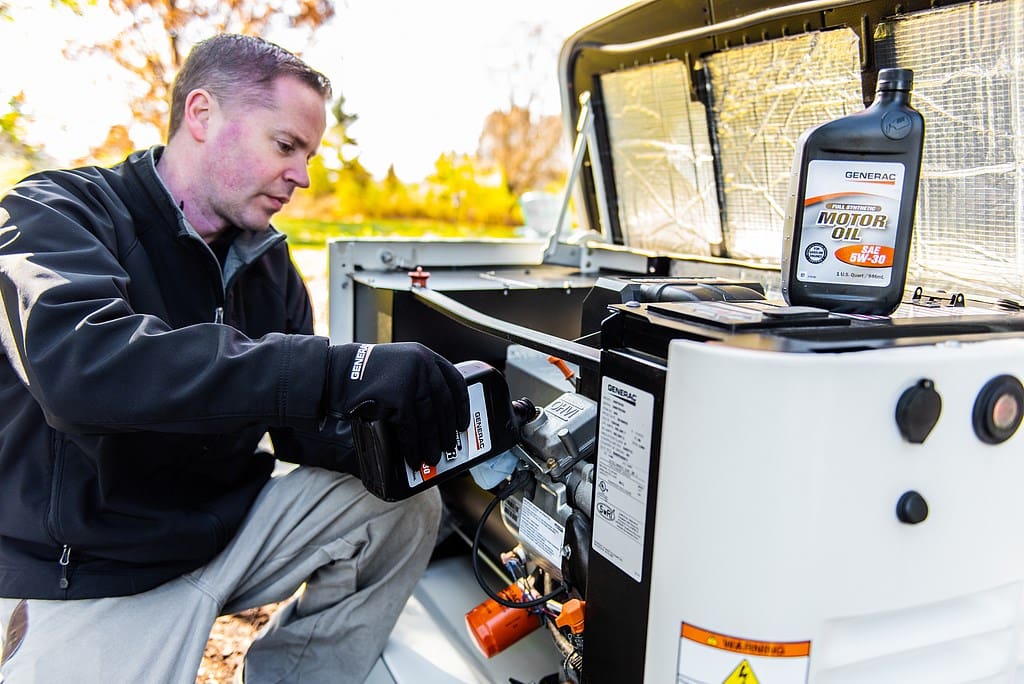
A backup generator is your home’s silent protector—always ready to power up when the lights go out. Although like any engine, it requires consistent care to remain reliable. One of the most essential (yet often overlooked) home maintenance tasks is knowing how often to change the oil in a generator. Skip this step, and you risk losing power when you need it most.
So, how often should you change your generator’s oil—and why does it matter? We have created a comprehensive outline that breaks down everything you need to know.
How Often Does a Generator Need New Oil?
The short answer? It depends mostly on how often and how long you run your generator. Most manufacturers recommend changing the oil for the first time after about 25–30 hours of use (especially for brand-new units), then every 50 to 200 hours after that, depending on the model and how it’s used.
Here’s a quick rule-of-thumb breakdown:
- Standby Generators (Home Use): Every 100–200 hours or once a year
- Portable Generators (Frequent Use): Every 50–100 hours
- Extended Use During Storms or Outages: Every 100 hours
If you’re dealing with Florida’s heat, humidity, and dust, it’s smart to stick to the lower end of those ranges. Running your generator for long stretches without a break also wears the oil down faster, so more frequent changes are key.
Not sure what your exact schedule should be? Time to dust off the owner’s manual. It’ll spell out the ideal oil change intervals for your specific model.
What Type of Oil Does a Standby Generator Need?
Choosing the right oil is just as important as changing it regularly. Most standby generators run best with SAE 5W-30 or 10W-30 synthetic oils, but requirements may vary by model and climate.
Here’s a breakdown of common oil types:
| Oil Type | Best For | Notes |
| SAE 5W-30 | Moderate to cold climates | Offers good startup protection |
| 10W-30 | Warmer climates (e.g., Florida) | Provides consistent viscosity |
| Synthetic Oil | All-season, long-term use | Lasts longer, resists breakdown |
| Conventional Oil | Budget-friendly or short-term use | Needs more frequent changes |
Always use oil that meets API Service Class SJ or later and check for manufacturer recommendations. If you’re planning to upgrade and schedule a brand-new generator installation, be sure to ask your technician which oil works best with your new model.
What Are the Steps for Changing Oil in a Backup Generator?
Changing the oil in your generator isn’t too different from changing oil in a car. Follow these steps carefully—or hire a professional for peace of mind.
How to Change Generator Oil:
- Turn Off and Cool Down the Generator: Never change oil while the engine is hot. Allow it to cool completely to avoid potential burns or injuries.
- Gather Tools and Supplies: You’ll need the recommended oil type, an oil filter (if applicable), a wrench, a funnel, and a container to catch the old oil.
- Locate and Remove the Oil Drain Plug: Place the oil catch container underneath and remove the plug to let the old oil drain completely.
- Replace the Oil Filter (If Needed): Some generators have oil filters that also need changing. Use a proper wrench to remove and replace it.
- Refill with New Oil: Use a funnel to add new oil slowly. Check the dipstick to avoid overfilling.
- Run and Recheck: Start the generator briefly, then turn it off and check the oil level again. Top off if necessary.
You got the new oil taken care of, but what about the used oil? Your old oil can be properly disposed of at a local recycling center or an auto shop.
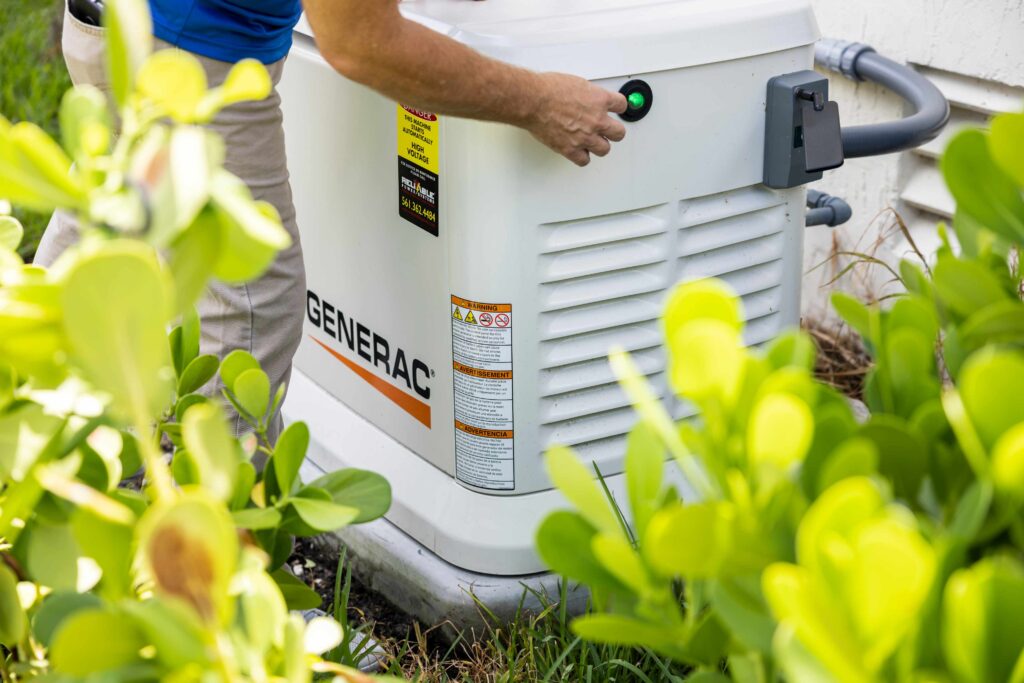
What Part Does Oil Play in a Generator?
Oil is the lifeblood of your generator’s engine. It reduces friction between moving parts, absorbs heat, and prevents harmful carbon buildup. Without clean oil, these parts wear out faster, increasing the risk of breakdowns, especially during prolonged use.
Quality oil helps:
- Lubricate engine components
- Regulate engine temperature
- Extend engine lifespan
- Improve fuel efficiency
Dirty or degraded oil loses its ability to protect the engine, which is why knowing how often to change the oil in a generator is so important.
What Happens If a Backup Generator Runs Out of Oil?
Running a generator without oil—or with oil that’s dirty or too low—can cause serious internal damage. Most modern units are equipped with low-oil shutoff sensors, but solely relying on them is risky.
If you run out of oil, you can run into problems like:
- Overheating of engine components
- Piston or cylinder damage
- Seized engine or complete failure
- Voided manufacturer warranties
If your generator has run dry or is showing signs of trouble, don’t take chances. Schedule whole-home generator repair services now to avoid costly damage down the line.
Can Oil Sit in a Generator for a Long Period of Time?
While it’s fine to store oil in a standby generator, letting the oil sit unused for too long can cause its quality to degrade. Over time, oil collects moisture, dust, and tiny metal particles, many of which are collected even when the generator is not running.
Here’s what can happen if oil sits for too long:
- Acidity increases, which can corrode engine components
- Sediment forms, clogging the filters and passageways
- Reduced lubrication, leading to dry starts
It’s essential to change your generator oil at least once a year, even if you don’t run it often. It keeps your system prepped and at its best when a sudden power outage strikes.
Backup Generator Maintenance Tips for Long-Term Reliability
Changing your generator’s oil is a great start, but it’s just one part of a proper generator maintenance routine. To keep your system running efficiently, here are a few more key steps to follow:
Change the Oil Filter
Think of the oil filter as your generator’s first line of defense against gunk and grime. If your system has one, it’s best to swap it out every time you change the oil. A clogged filter can choke oil flow and make the engine work harder than necessary. Stick with the manufacturer’s recommended filter for the best fit and performance.
Clean the Air Filter
Your generator needs to breathe—literally. A dirty air filter can restrict airflow, reduce efficiency, and even lead to engine trouble over time. After major storms or prolonged use, remove the filter and inspect its condition. If it’s looking rough, give it a clean or replace it altogether. Fresh air = smoother power.
Inspect the Spark Plugs
Having trouble getting your generator to start? Spark plugs might be the culprit. They’re small but mighty—and if they’re worn out or covered in soot, your system will struggle. Give them a once-over at least once a year and replace any that appear worn out.
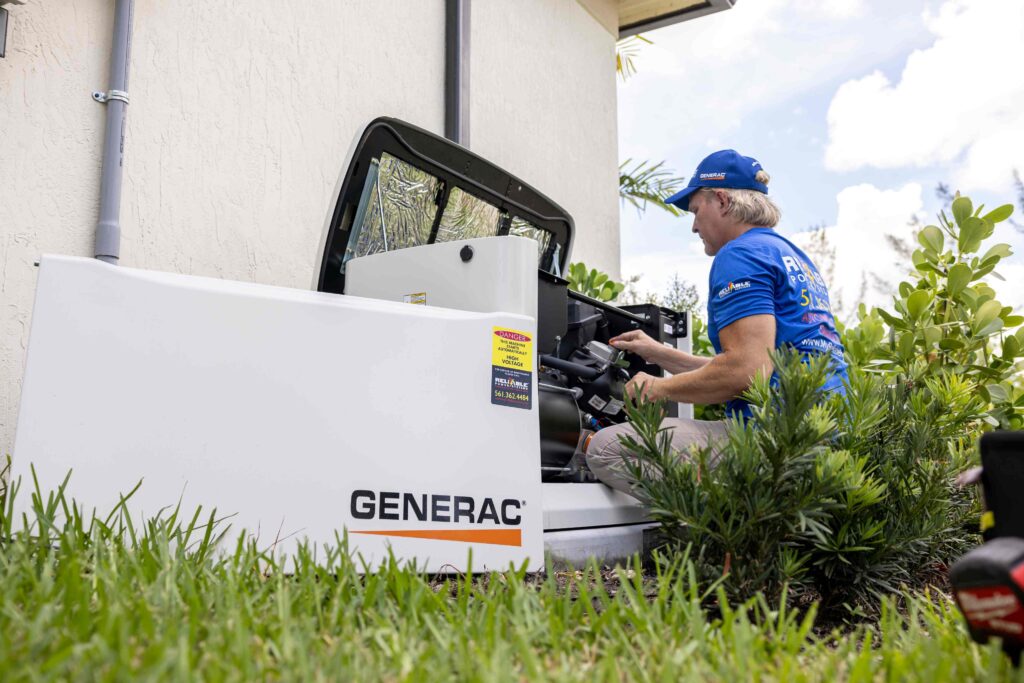
Need Help? We Offer Professional Backup Generator Repair and Maintenance Services
Living in South Florida means planning in advance, especially when hurricane season rolls around. Knowing how often to change the oil in your generator is just one small (but essential) step in emergency preparation.
At Reliable Power Systems, we understand what local homeowners need to stay powered up and protected. Our team provides expert generator repair services in Fort Myers, Florida, so your system is ready when the weather turns.
Whether it’s time for routine maintenance, a brand-new installation, or fixing an issue that’s been bugging you, we’ve got you covered. Reach out today at (561) 408-5147 to schedule your service and keep your backup generator running strong all year long.


